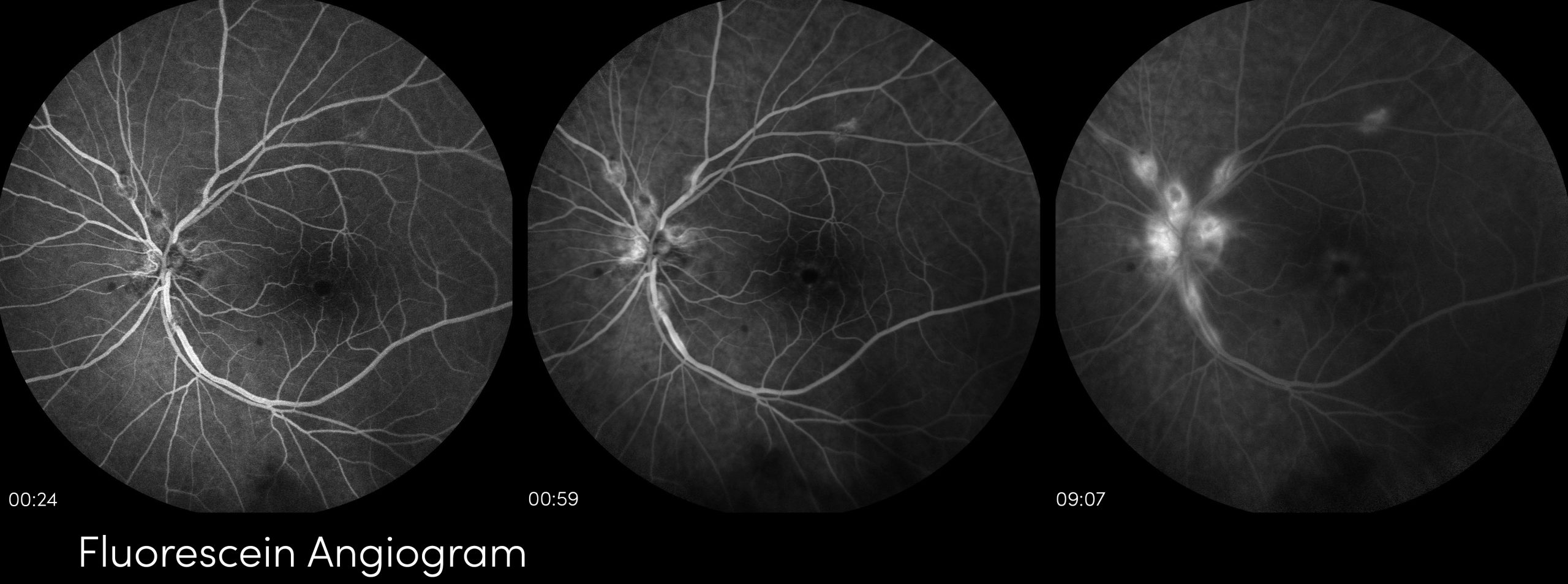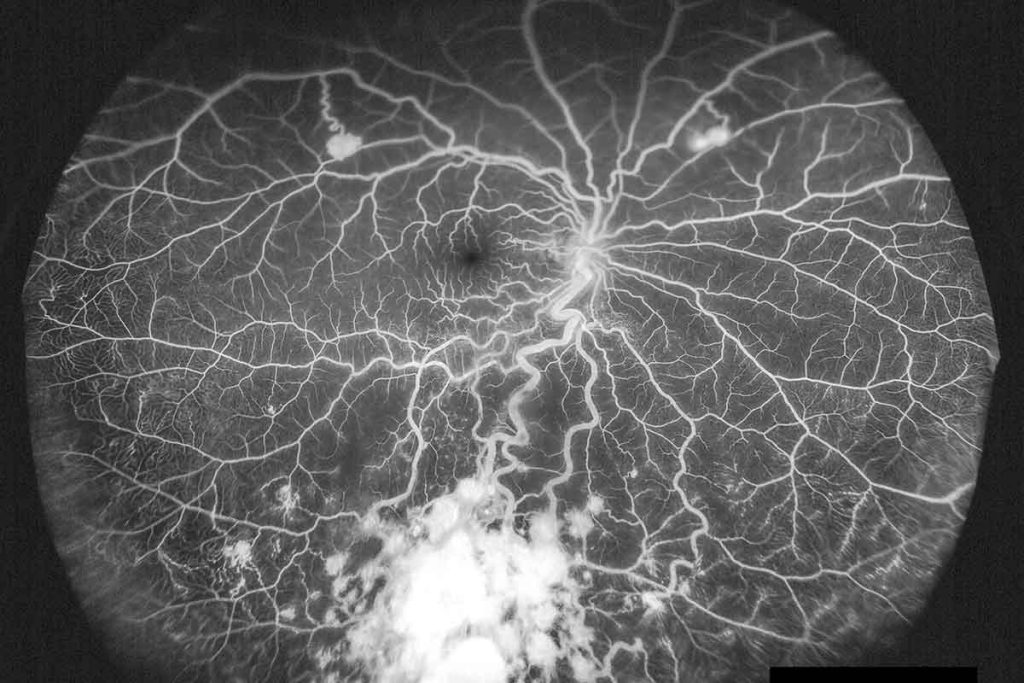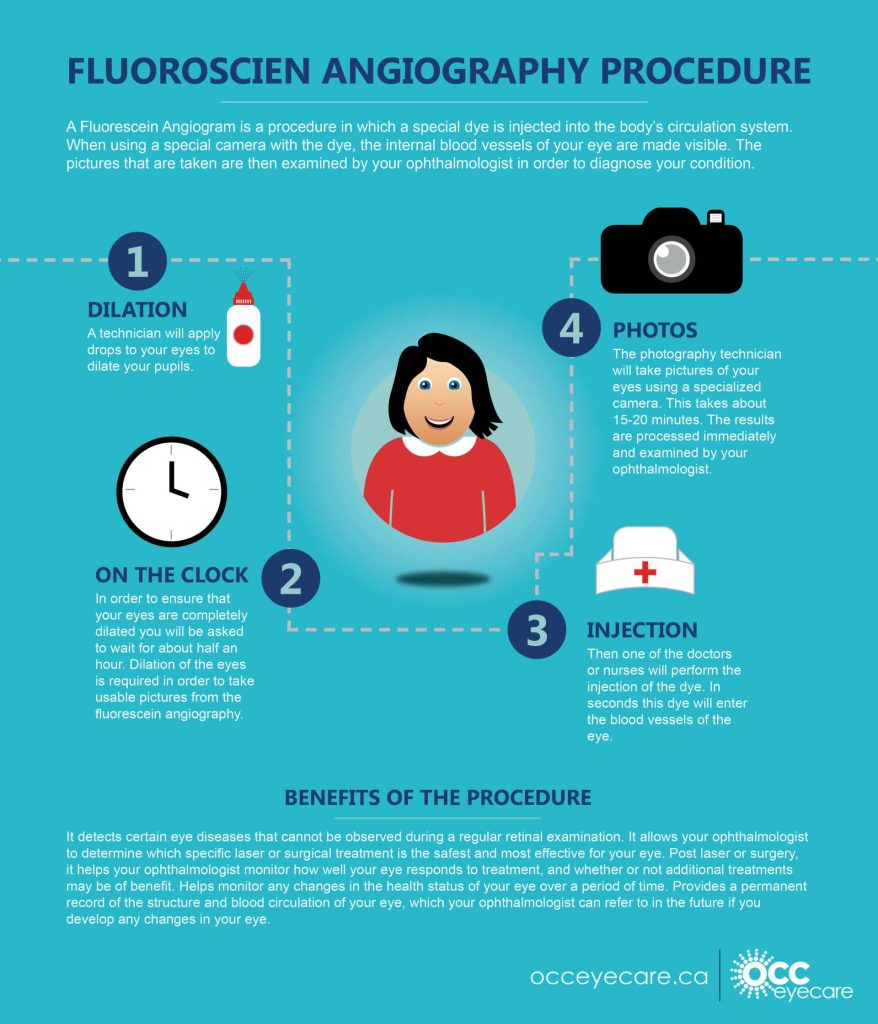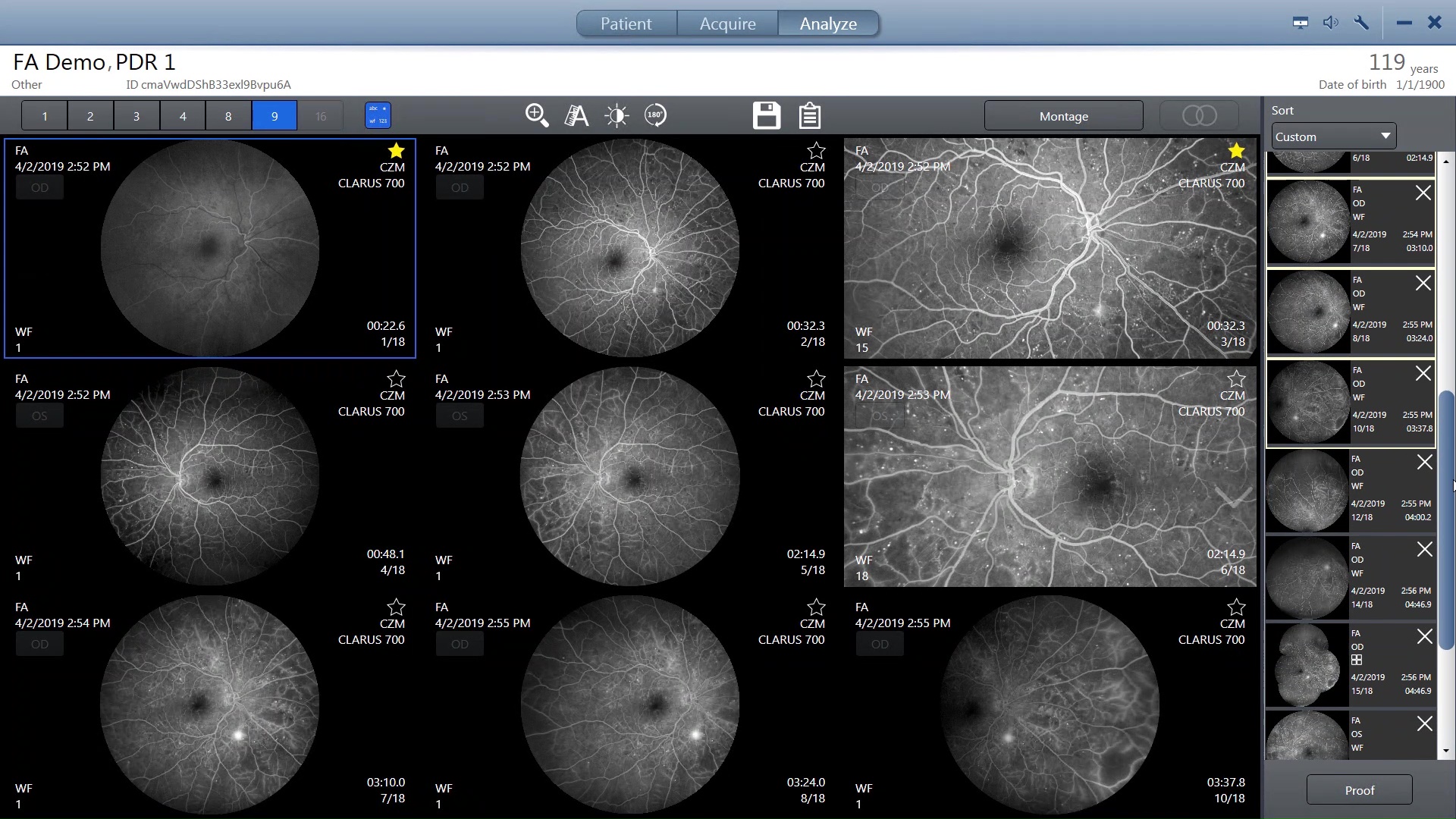

Your eye specialist might do a fluorescein angiogram (FA) to look at the blood vessels in your eye. You may also have a photograph taken of the surface of the inside of the eye (the fundus). Doctors call this colour fundus photography.
What is it?
A fluorescein angiogram looks at the blood vessels and the lining at the back of your eye (the retina). This test can pick up changes in the condition of your eyes. It can help your specialist make a diagnosis of eye cancer or tell them how well treatment is working.
What happens
You usually have the test in the eye department or the x-ray department at the hospital.
Before the test
The test takes about 15 to 20 minutes, but you can be in the department for 2 hours. This is because of the preparation before the test and recovery after.
You can eat and drink normally and can usually take your regular medication. Your nurse will tell you a few days before what medication you can take on the day of your test.
About 15 minutes before the test the nurse puts drops in your eyes to enlarge the pupils. This gives the doctor a good view of the inside of your eyes. The drops might sting a bit when they first go in.
You will need to remove your contact lenses for this test, so it may help to bring your glasses (spectacles) to wear home.
During the test
Your eye specialist puts a small tube (cannula) into a vein in your hand or arm. A yellow coloured dye called fluorescein is injected into the cannula. This dye travels through your blood to the blood vessels in your eyes. Photographs are taken of your eyes as the dye passes through.
It is common to feel warm or flushed when you have the injection. You might also feel sick. These feelings usually pass within the first few minutes.
The dye can cause the following side effects around the site of the cannula:
- itching
- rash
- tingling sensation
It is important to tell the nurse or eye specialist if you feel unwell at any time during your test. They will not mind stopping until you are ready to continue.
Sometimes you can have a family member or friend with you while you have the test. Do speak to your nurse beforehand if you would like someone with you
Colour fundus photography
Colour fundus photography is often used at the same time as fluorescein angiography. It helps the eye specialist see the surface inside the eye (the fundus). Pictures are taken using a microscope with a camera attached to it (colour fundus camera). You usually see a flash of light with each picture. This can dazzle you, but it shouldn’t be uncomfortable.
Try to keep your head as still as possible. This helps your specialist get clear pictures and look for any changes in the condition of your eyes.
After your tests
In the hospital
You usually stay in the department for about 30 to 60 minutes after the test. This is so the nurse can check for any side effects.
When you are ready to go home your nurse removes the cannula and puts a dressing over the area. You may have to put pressure on this for a few minutes to make sure it is not bleeding.
Your eyes are often blurred for a few hours after so you shouldn’t drive yourself home. It may help to have a relative or friend with you.
It is common for the fluorescein dye to cause your urine and skin to become yellow. It can last up to 48 hours. This is normal and will not cause you any harm. Drinking plenty of water will help flush it out.

At home
- Rest when you get home and continue normal activity the following day.
- You can eat and drink normally.
- Your eyes can be sensitive to light for about 24 hours after. It might help to wear sun glasses. Avoid straining your eyes, so it might be a good idea not to read or look at a screen too much.
- You may notice bruising around the cannula site, this will get better over the next few days.
Possible risks
It is rare to have any problems after a fluorescein angiogram. There is a very small risk of having a severe allergic reaction to the dye (anaphylaxis). This would happen during or soon after you have the dye. The medical team looking after you will know what to do if this happens.
Rarely the cannula site can become red and painful. It may also look swollen. Check who you should contact if you have any concerns or questions when you are at home.
Getting your results
You may have to wait to get the results. Ask your doctor or nurse how long it will take to get them. Contact the doctor who arranged the test if you haven’t heard anything after a couple of weeks.
Waiting for results can make you anxious. It may help to talk to a close friend or relative about how you feel.




